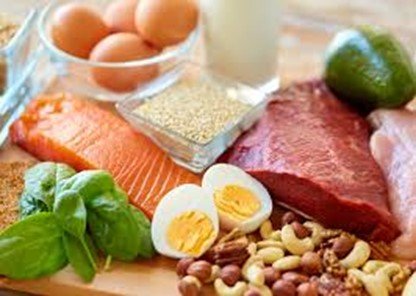Protein is a crucial macronutrient that plays a vital role in nearly every function of the body. From building and repairing tissues to producing enzymes and hormones, protein is essential for maintaining overall health. But what is the actual daily need for protein? The answer isn’t straightforward and can vary based on a number of factors including age, sex, activity level, and specific health goals. In this article, we’ll explore the recommended dietary allowances (RDAs) for protein, the factors that influence your protein needs, and practical tips for incorporating enough protein into your diet and also How Much Protein Do I Need A Day in detail.
Understanding Protein Requirements
Recommended Dietary Allowance (RDA)
The RDA for protein is based on a person’s body weight and activity level. For the average adult, the RDA is approximately 0.8 grams of protein per kilogram of body weight. This means if you weigh 70 kg (about 154 pounds), your daily protein requirement would be around 56 grams.
Special Considerations
- Age: As you age, your body’s ability to synthesize protein efficiently decreases. Older adults may benefit from higher protein intake—around 1.0 to 1.2 grams per kilogram of body weight.
- Activity Level: Athletes or those who engage in regular physical activity often require more protein to support muscle repair and growth. Depending on the intensity and type of exercise, their needs can range from 1.2 to 2.0 grams per kilogram.
- Health Goals: If you’re looking to lose weight, build muscle, or recover from an illness or injury, your protein needs may increase. For muscle gain, a target of 1.6 to 2.2 grams per kilogram is often recommended.
- Pregnancy and Lactation: Pregnant and breastfeeding women have higher protein needs—typically around 1.1 grams per kilogram during pregnancy and up to 1.3 grams while breastfeeding.
Sources of Protein
Protein can be sourced from both animal and plant foods. Every source has certain advantages of its own:
Animal Sources
- Meat: Beef, pork, and poultry are rich in protein and provide essential amino acids.
- Fish: Fatty fish like salmon and tuna not only offer protein but also provide healthy omega-3 fatty acids.
- Dairy: Milk, cheese, and yogurt are high-protein and calcium-containing foods.
Plant Sources
- Legumes: Peas, beans, and lentils are excellent providers of fiber and protein.
- Nuts and Seeds: Almonds, peanuts, and chia seeds provide healthy fats along with protein.
- Whole Grains: Quinoa, brown rice, and oats contribute both protein and carbohydrates.
Combining Sources
For those following a vegetarian or vegan diet, it’s essential to combine different plant proteins to ensure you get all essential amino acids. Foods such as rice and beans or peanut butter on whole-grain bread create a complete protein profile.
How to Calculate Your Protein Needs
To determine how much protein you need, follow these steps:
- Determine Your Weight in Kilograms: Divide your weight in pounds by 2.2 (for example, 154 pounds / 2.2 = 70 kg).
- Choose Your Protein Multiplier: Based on your age, activity level, and goals, select an appropriate multiplier:
- Sedentary adults: 0.8 g/kg
- Active adults: 1.2-2.0 g/kg
- Older adults: 1.0-1.2 g/kg
- Pregnant/lactating women: 1.1-1.3 g/kg
- Multiply: Multiply your weight in kilograms by the chosen multiplier to find your daily protein requirement. For example, if you are a 70 kg active adult aiming for 1.6 g/kg:
70 kg×1.6 g/kg=112 grams of protein per day70 \text{ kg} \times 1.6 \text{ g/kg} = 112 \text{ grams of protein per day}70 kg×1.6 g/kg=112 grams of protein per day
Signs You Might Need More Protein
While many people consume enough protein, others may fall short. Here are some signs that you might need to increase your protein intake:
- Frequent Muscle Weakness or Fatigue: This could indicate inadequate protein for muscle maintenance and repair.
- Slow Recovery from Injuries: Protein is crucial for healing; if you notice prolonged recovery times, assess your intake.
- Increased Cravings: Sometimes, cravings for sugary or high-carb foods can indicate a lack of protein in your diet.
- Loss of Muscle Mass: If you are losing weight, ensure you are consuming enough protein to prevent muscle loss.
Practical Tips for Increasing Protein Intake
- Start Your Day with Protein: Eat a breakfast that consists of foods high in protein, such as Greek yogurt, eggs, or protein smoothies.
- Snack Wisely: Choose snacks high in protein, like nuts, cheese, or hummus with veggies.
- Incorporate Protein in Every Meal: Aim to include a source of protein in each meal. If you’re a vegetarian, consider adding legumes or dairy products.
- Experiment with Protein Supplements: If you struggle to meet your protein goals through food alone, protein powders can be a convenient option.
- Plan Your Meals: Preparing meals in advance ensures you can easily incorporate protein-rich foods into your diet without having to think on the spot.
Conclusion
Protein is an essential component of a healthy diet, and understanding your individual protein needs can help you optimize your health and wellness. While the general guideline of 0.8 grams per kilogram is a great starting point, consider your lifestyle, age, and health goals to determine the right amount for you. By being mindful of your protein intake and choosing a variety of protein sources, you can support your body’s needs and enhance your overall health. Whether you’re an athlete, a busy professional, or an older adult, making protein a priority in your diet will pay dividends in the long run.
Read More: kingcomix

